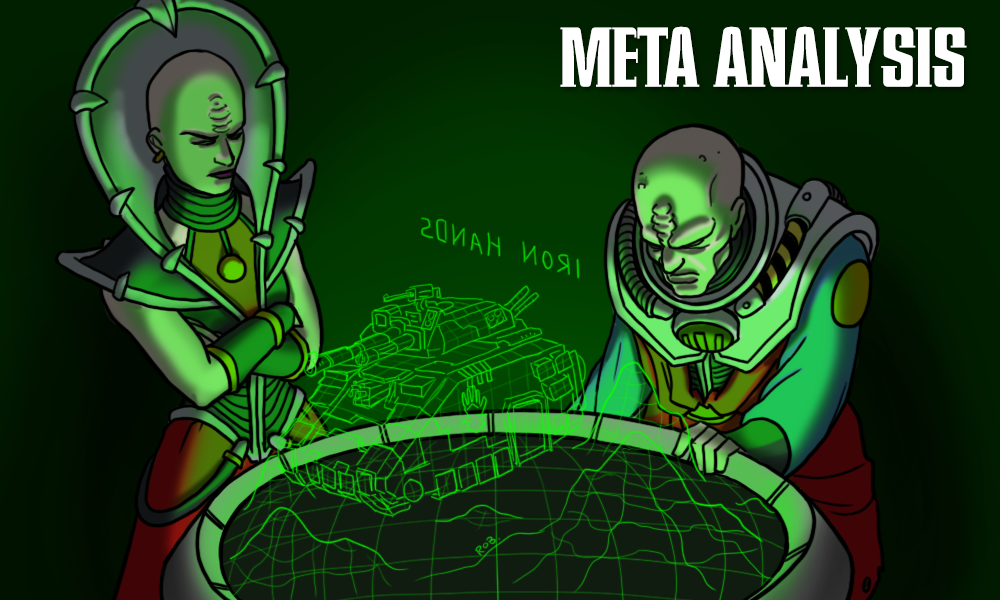It’s the Christmas holidays and no events are happening, which means that for one glorious week I am freed from the eternal tyranny of the monster column I have created (good), but also need to think of something to fill the Wednesday 40K slot (bad). Luckily, like many people in various parts of the 40K community (competitive or otherwise), about a month ago I watched Dan Olson’s excellent video about instrumental play and its impact on World of Warcraft (go watch it here if you haven’t already), and both the content itself and some of the reactions to it spawned various proto-columns in my head, of which this is one. Today, I’ll be addressing what I think is a misconception about one of the challenges of playing 9th Edition 40K effectively, which I think can be summed up as follows.
“I need to know too many rules to play 9th Edition”

The idea that the volume of rules that exists across all armies in 9th creates a prohibitive knowledge barrier to playing the game has gained quite a bit of momentum over the edition (especially as we entered it off the back of Psychic Awakening’s scattergun of rules). Most players are happy building up familiarity with what their own army can do, but with ever-increasing numbers of factions in the game, each with powerful tricks that can change the flow of an entire game if you’re not ready for them, many feel that it’s become impossible to maintain the knowledge needed to play the game to a level that they’re happy with. I’m going to argue that by flipping around the way you think about capabilities and tricks, and by asking the right questions at the right time, you can learn about the rules your opponent has which matter during the game, playing effectively without needing to speed read their codex between rounds.
This is not intended as a review or analysis of Dan’s video nor is a general riposte to people using it as ammunition in a wider argument about whether competitive play is a good or bad thing, and whether the massive increase in the volume of competitive-skewed paratext about 40K over the course of 8th and 9th Editions is healthy or not (though for the record, I’m not sorry and I’ll do it again). I do have at least one more column idea flowing out of it that I’ll put together at some point which does dive a bit deeper into some of the more polarising elements of 9th Edition, which I think the video provides a good vocabulary and framework for discussing, but that’s for the future. Today, I’m in teaching mode, so let’s find out how you filter through the noise and zoom in on the rules that really matter – transformational rules.
What is a Transformational Rule?
One of the reasons for writing this is that the concept of a transformational rule is one I’ve had in my head for a while, and that I’m pretty sure I’ve dropped into various reviews and columns (possibly in the form “transformational ability”, which is interchangeable), but have never actually defined, so let’s fix that.

As far as I’m concerned, a transformational rule is one that fundamentally changes what a unit or army can do in a game of Warhammer. “But Wings”, I hear you say, “don’t all rules do that?”. My answer to that is a firm no – I think you can very broadly divide rules into those that augment or streamline an existing capability, and ones that either provide new capabilities, and the latter are what I mean when I refer to a transformational rules. The line to qualify as a transformational rule can be a bit blurry in some circumstances, which we’ll get to, but I’ve found the concept to be consistently useful for analysing codexes and army lists, and think it’s vital to addressing the question at hand.
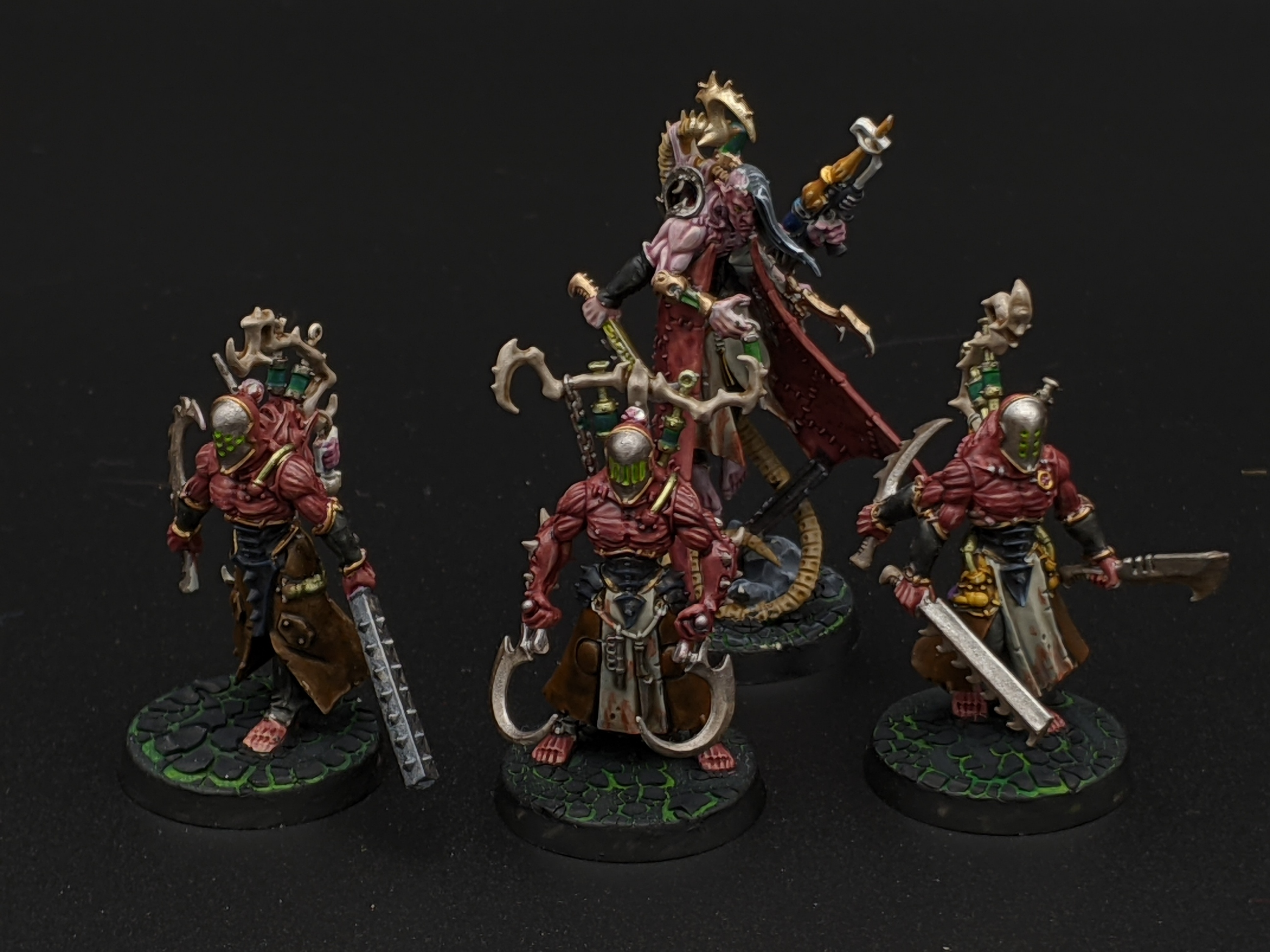
Let’s start with an example to firm up the definition here, taking two Stratagems from the Drukhari Codex, Prey on the Weak (provides re-rolls against units below starting strength) and Potent Metallotoxins (allows Poison to work against Vehicles), and how they might apply to a game situation. I am playing Astra Militarum, and the dastardly Drukhari have a unit of ten Wracks moving towards my lines, intending to do cruel and terrible things to my precious Kasrkin. Luckily, however, I have a Scout Sentinel (surviving from a squad of two) nearby that isn’t doing much, and if I charge it into the Wracks and it survives, then come the Drukhari turn they won’t be able to charge my valuable infantry. The fact that Prey on the Weak exists here doesn’t really matter – adding re-roll 1s to hit isn’t going to overcome the fact that the Wracks are wounding on 6s, leaving them still needing an astronomical high roll to get a kill. Potent Metallotoxins, on the other hand, is a much bigger problem – pop that, and suddenly the Wracks are averaging seven wounding hits into my tank, which at AP-1 averages 5-6 unsaved wounds. Its still unlikely the Sentinel dies, but it’s now a distinct possibility, and one that may need you to come up with an alternative strategy – making Potent Metallotoxins transformational in this situation.
All sounds clean and simple – but people who know the Drukhari codex well probably have some immediate objections. Firstly, Prey on the Weak isn’t the best boost to output that the Wracks have access to here – that falls to The Torturer’s Craft, which nearly doubles their expected output instead of the ~17% boost that Prey provides – is that enough to be transformational? Secondly, all of this can be made academic just by spending a single CP on Cruel Deception to allow the Wracks to fall back and charge, and at that point you might reasonably ask how exactly I’m going to turn this into an argument that there aren’t too many rules in this game. That, happily, is where flipping our thought processes around comes in.
Identifying the Rules That Matter
Fundamentally, your goal in a game of 40k is to devise a realistic plan to use your army to score a greater number of points than your opponent does. Transformational rules matter because they do one or both of the following:
- Provide a player with new ways to use one of their assets in service of executing their plans.
- Provide a player with new ways to interfere with their opponent’s plans.
I would argue that when it comes to your opponent’s rules, you only need to know about them in a given situation if they’re doing one of these things. For your own rules, a broader suite are going to be relevant to hashing out exactly how you work towards your goals – for example, being able to give a unit re-roll 1s to hit might change how many threats you allocate to taking out a target – but you don’t need to know every possible way that your opponent could smooth out the variance on their turn if they don’t make a meaningful change to what it would be reasonable for them to try.
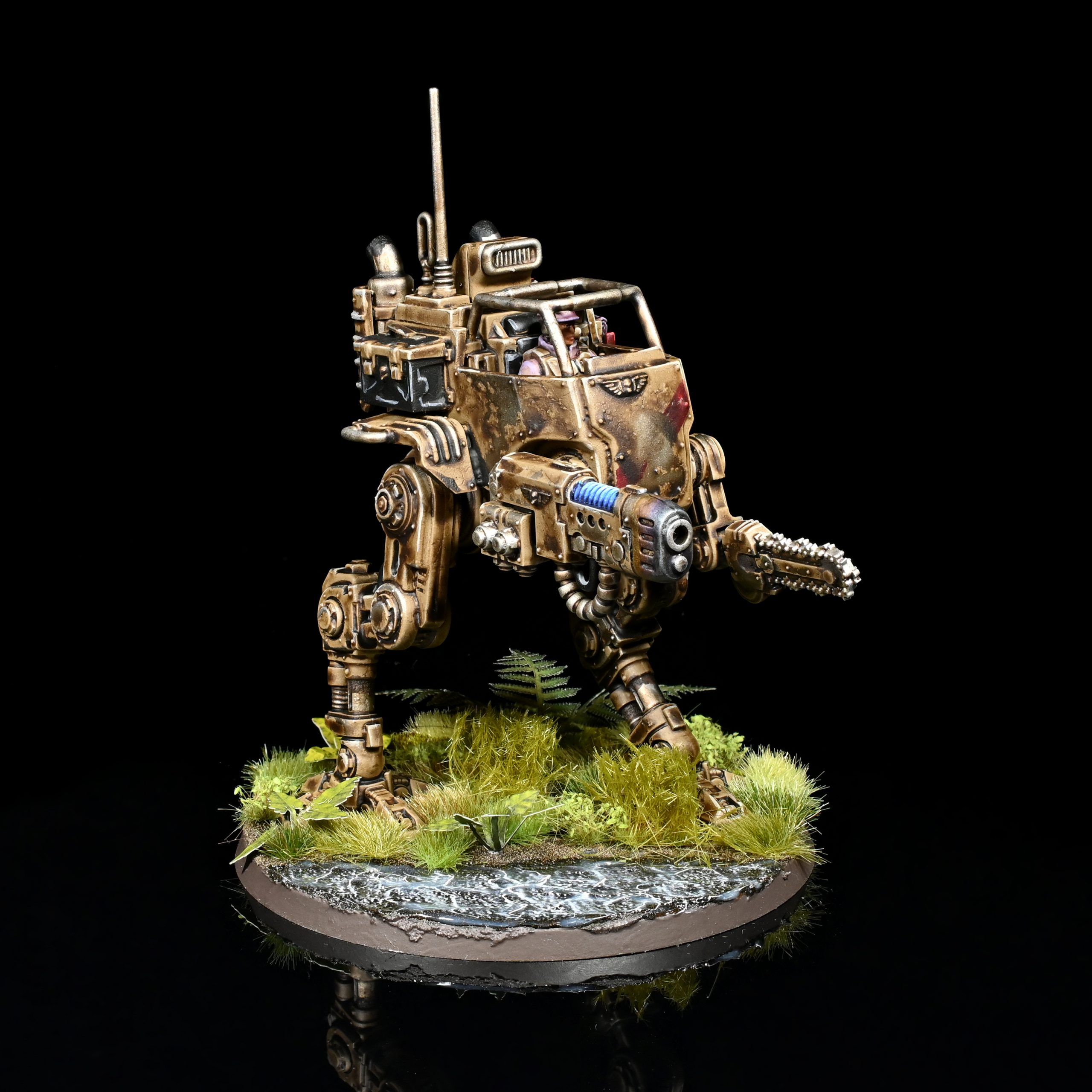
Even better, because you should know what your plans are at any given time, you should know what things could cause it to fail. There may be hundreds of individual Stratagems in the game, but there are only so many things they can do within the framework of 40K’s rules, so instead of trying to remember every possible Stratagem, think about what one would need to do here and now to impact on your plans. Returning once more to our epic Sentinel vs. Wracks showdown, there are basically two ways your plan of charging the Wracks to tie them up could fail:
- The Wracks kill the Sentinel.
- The Wracks can Fall Back and Charge somehow.
So – ask! Before you move your Sentinel and commit to this plan, ask your opponent “do you have any way of making the Wracks hit harder?” and “do you have a way of falling back and charging?”. Here you’ll get the answer “yes” to both questions, at which point you can dig into how, and then decide if that affects your plans. The answer might depend on exact circumstances, such as how many Command Points the opponent has access to, and how much the various stratagems cost to use, and could also be dependent on the level of risk you’re willing to accept in the situation.
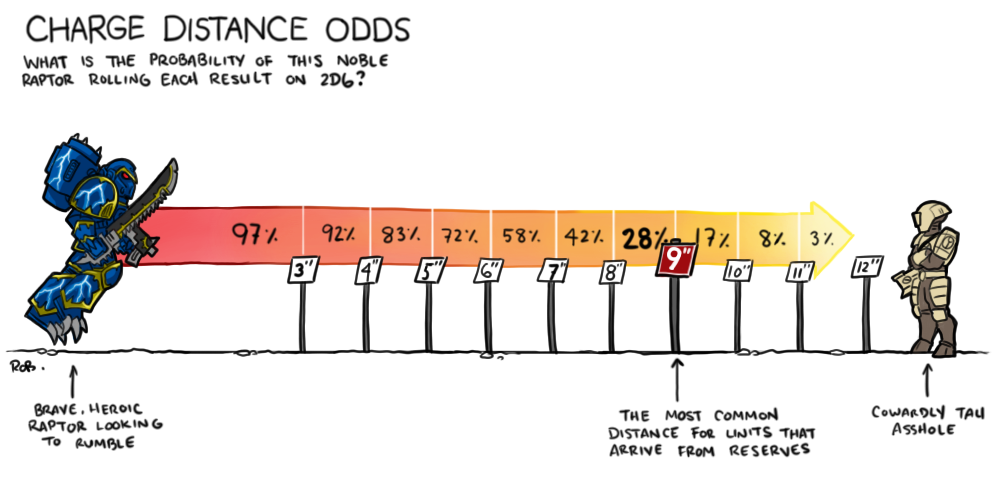
How pivotal to your overall game plan an individual action is, and thus how much risk you’re willing to accept, can help assess whether a given rule is actually “transformational” in a situation. We can return one more time to our example to demonstrate that. If the opponent has access to 2CP, then the play becomes fairly high rish, as with Potent Metallotoxins active, the Wracks only narrowly fail to kill the Sentinel on average dice, so you can’t rely on this plan working. If they only have 1CP, however, then they only have access to The Torturer’s Craft, so we can ask whether that less potent buff does enough to their damage output to transform our plans. Here an understanding of probability and how to calculate expected damage outputs can help (and is a good general skill to develop, as it’s relevant in every matchup), and here the way this hashes out is that unbuffed, the Wracks have less than a 1% chance of killing the Sentinel, while with Torturer’s Craft the odds climb to about 5%. Most of the time, that’s probably a risk you can take – but if you know that you outright lose the game if this goes wrong, you might want to reconsider. The more important an element of your plan is, the more likely that the opponent being able to manipulate the maths on it is effectively transformational, and the more important to your plan that a given play is, the more alert you should be to how it could go wrong.
Once you start approaching the game in this way, you’ll quickly realise three things:
- It works the same whatever you’re up against – using this process works just as well against Drukhari as against Votann.
- Learning the types of tricks that exist is much more valuable to your growth as a player than trying to learn everything one faction can do – it teaches you to understand what’s possible.
- By thinking about how your opponent could disrupt your plans, it forces you to make sure that you have a plan and are considering what the failure conditions could be, and whether you can put contingencies in place for them.
All of this is good, but doesn’t trying to learn on the fly like this slow everything down massively? A bit – but if you’re thinking about it properly, less than you might expect.
When To Ask These Questions
Considering an opponent’s capabilities in terms of how they could impact your plans already puts a fairly big filter on what you need to think about at any given time, and once you’ve been told about an opponent’s relevant rules a few times, you’re likely to start remembering them – especially if their answer for a given question is “none”. Even beyond that, however, once you adopt this way of approaching the game, you’ll find that your questions are concentrated at two key points – the start of your Movement Phase, and during Deployment.
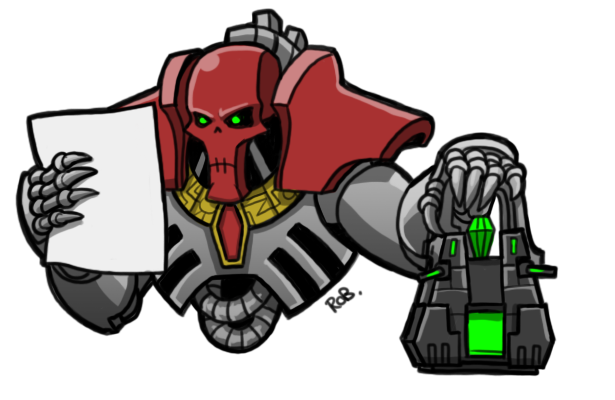
Given the focus on planning, that shouldn’t be hugely surprising, because the Movement Phase is the part of the turn where you formulate your plans and set them up – and the rest of the turn is where you use your units weaponry and charge capability to deliver on them. Obviously plans will sometimes change over the course of the turn, particularly if you get unusually good or bad luck, but mostly the place your units end up at the end of the Movement Phase should be based on what you’re expecting them to do over the rest of the turn. If that involves interacting with your opponent’s units, then you should be aiming to understand what they could do to mess with that before you commit to the move. Your opponent having a potential trick won’t always mean you shouldn’t do something, but it may mean, for example, want to build some contingency plans into your choices. If your plans do end up derailed by the nefarious dice gods, then you might need to start asking some questions later in the turn as you come up with a new strategy, but overwhelmingly if you’re disciplined about it the Movement Phase is the part of the turn where this matters – and by helping ensure you can not worry too much about endless possibilities for the rest of the turn, you can keep your mind free of clutter.
Deployment is the other key point where you need to be considering your opponent’s capabilities, because how you deploy should be supporting your plans for the early game, and it provides an opportunity to reduce your opponent’s ability to make effective use of their rules. The set of things you need to think about in deployment tends to be a bit narrower, but the impact if you miss some of them can be devastating, so make sure to ask the key questions here as well.
What are these questions though? Well, here’s the bit where I attempt to be even more helpful – the next section covers the questions that I use to check for upcoming traps in my games, because it turns out that even I, someone who reviews every codex and reads hundreds of X-0 and X-1 army lists every week to prepare this column, do not know every rule.
Key Questions to Ask in Your Next Game
Deployment Questions
| When you... | Ask... | So you can... |
|---|---|---|
| Plan to move a Psyker | Where your opponent's denies are, or if they can deny with a stratagem? | Position outside the radius if possible. |
| Plan to move units to shoot/melee an opposing unit off an objective. | Can your opponent make that unit any tougher? | Make sure you move additional units into line of sight/charge range so you have spare killing power, or re-evaluate your plan if you can't. |
| Plan to move into position or deploy reserves to charge a unit | Can your opponent make the charge harder? | Move closer, or choose another target |
| Plan to move an ObSec model to flip an objective | Can your opponent's units gain ObSec? | Move enough models to outnumber them, or re-evaluate your plans if you can't. |
| Plan to charge an enemy unit just to tie it up. | Can your opponent's unit fall back and shoot/charge, or do they have a way of hitting harder? | Re-evaluate whether it's worth it. |
| Plan to charge a dangerous enemy unit | Can your opponent make you Fight Last? | Ask whether they have interrupt CP, and then re-evaluate whether it's safe. |
| Plan to charge multiple dangerous enemy units | Does your opponent have the CP to interrupt? | Re-evaluate whether it's safe or worth it. |
Is that everything? Of course not – there are some rarer tricks out there, and this won’t cover absolutely every possibility, but it covers a lot of ways you could get caught out, and I guarantee that if you start asking these questions, you’ll get caught out far less.
Wrap Up
Hopefully that’s a helpful bit of insight into a different way to approach the growing number of rules in the game. If there are some key questions you use that I’ve missed, please do let me know in the comments.
Have any questions or feedback? Drop us a note in the comments below or email us at contact@goonhammer.com.
